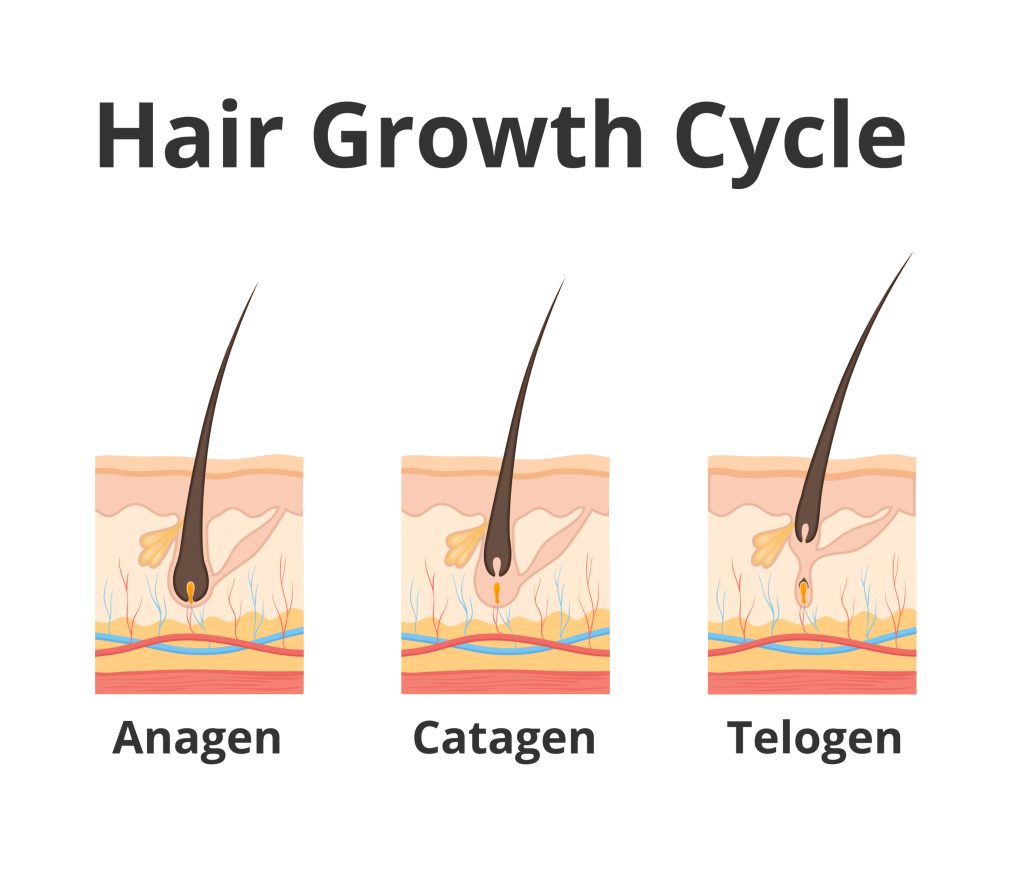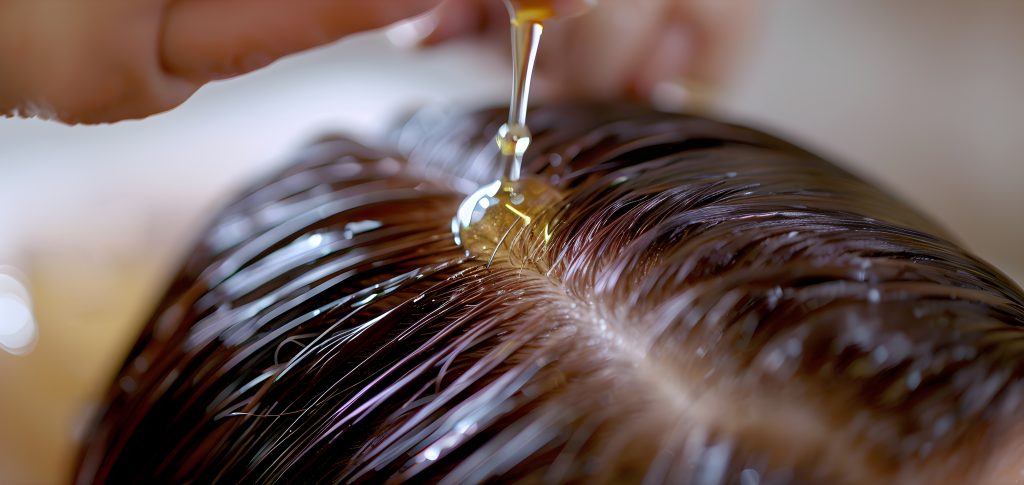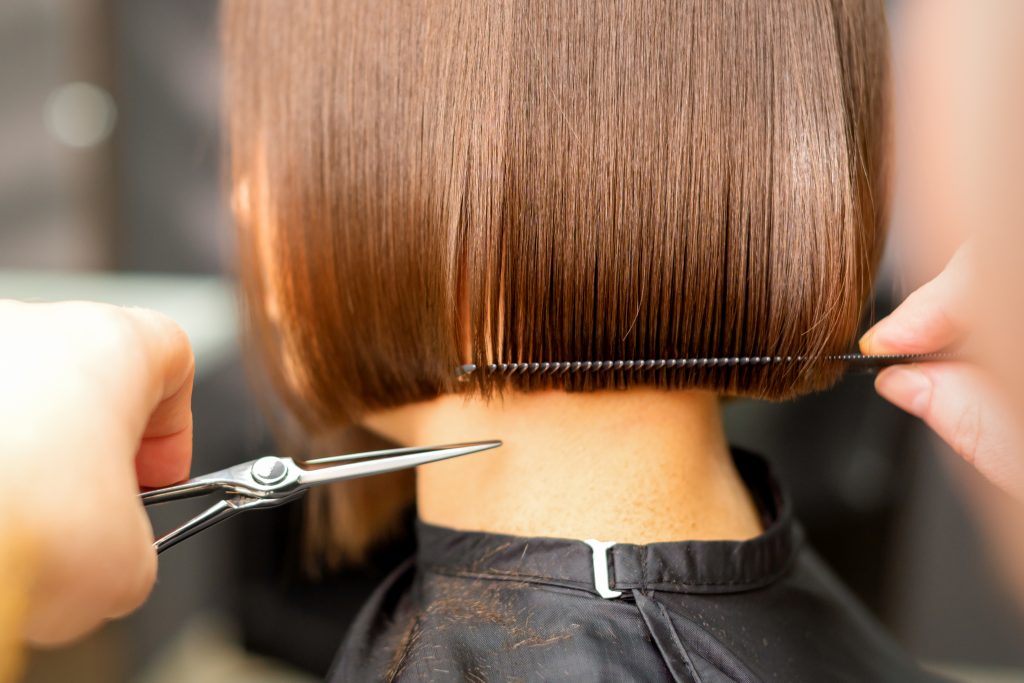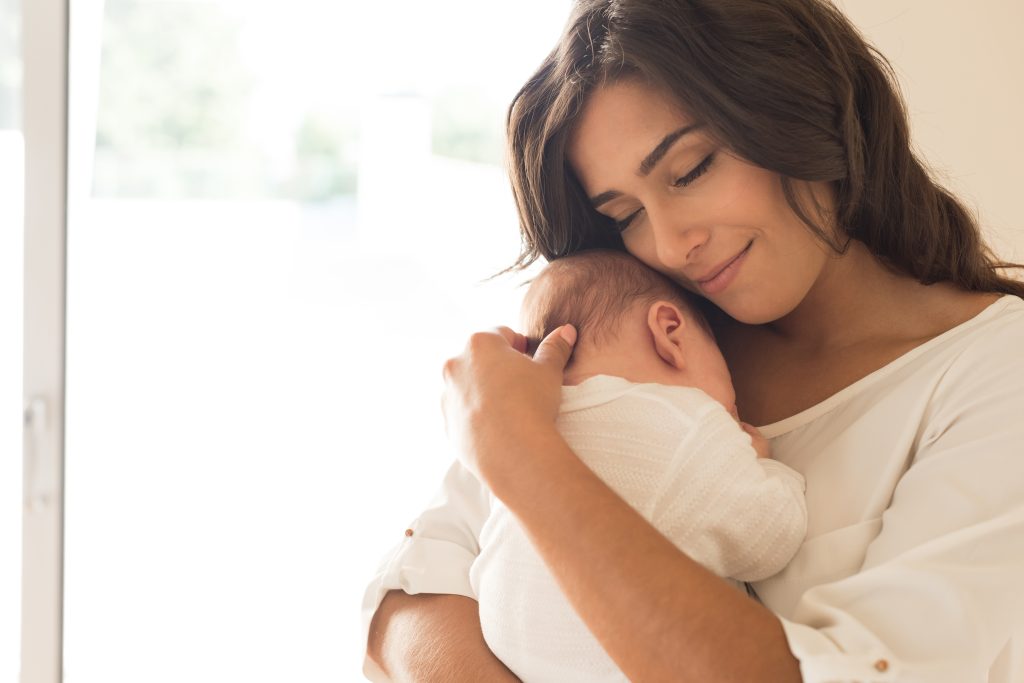
Pregnancy is a life-altering period in a woman’s life; along with it, significant changes come about – including some to hair health. Hormonal changes may influence hair texture, volume, and condition.
Whether you enjoy lush growth while pregnant or hair loss after giving birth, some care and professional intervention can pay off. Here’s how you may care for your hair during pregnancy, and post-baby.
Knowing Hair Growth Phases
Hair cycles through stages, and knowing the stages can ensure proper hair health management:
Anagen (Growth Phase): This is the active growth phase of hair, which can be prolonged during pregnancy due to hormonal changes.
Catagen (Transition Phase): Hair stops growing and prepares to shed.
Telogen (Resting Phase): This is when hair naturally falls out. Postpartum hair shedding occurs because pregnancy hormones delay this phase, causing a sudden increase in hair loss after birth.




Before Pregnancy: Prepping Your Hair for Changes
Maintaining a healthy food plan: A regimen of vitamins and minerals like biotin, iron, and omega-three fatty acids strengthens hair.
Trimming Regularly: Trimming your hair stops split ends and keeps your general hair healthy before pregnancy-induced changes begin.
Use mild Hair products: choose sulfate-free shampoos and moisturizing conditioners to hold your hair healthy and within reach.
Scalp Care: Massaging the scalp with essential oils, e.g., coconut or castor oil, stimulates blood flow and encourages healthy hair growth.
Limit Heat and Chemical Treatments: Too much heat styling and chemical remedies can cause hair to become weak and more prone to damage during pregnancy.
Check for Underlying Conditions: If you already have hair or scalp conditions, see a dermatologist before pregnancy to prevent them from worsening.
Select Pregnancy-Safe Hair Products: Use shampoos and conditioners without parabens, sulfates, and harsh chemicals to guarantee security for yourself and your child.
Stay Hydrated: drinking water maintains your hair and scalp well moisturized, minimizing dryness and breakage.
Gentle Hair Care Routine: Hormonal shifts can make hair more fragile. Use wide-tooth combs and soft hair ties to minimize breakage.
Regular Deep Conditioning: Treat your hair to nourishing masks and treatments to maintain shine and strength.
Consult a Professional Prior to Coloring Hair: Hair dyes contain chemical compounds that may not be safe at some point during pregnancy. If you desire to colour your hair, use ammonia-free or natural dyes and ask your hairstylist for the safest products.
Monitor Hair Texture Changes: Some women notice changes in hair texture; be willing to change your routine.
After Birth: Managing Postpartum Hair Changes
Expect Postpartum Shedding: Many women experience hair shedding a few months after giving birth. This is normal and usually temporary.
Continue a Nutrient-Rich Diet: Eating foods high in protein, iron, and vitamins supports hair regrowth.
Steer Clear of Tight Hairstyles: Reduce tension on hair follicles by avoiding tight ponytails or braids that can lead to hair thinning.
Use Strengthening Hair Treatments: Choose keratin-enriched conditioners or leave-in treatments to repair strength and prevent breakage.
Scalp Professional Treatments: Consult a dermatologist or trichologist for professional scalp treatments when excessive shedding persists.
Control Stress: Postpartum stress may affect hair health. Rest techniques such as yoga or meditation can help limit stress-induced hair loss.

What You Can Do at Home
DIY Hair Masks: Homemade hair masks made from materials such as yogurt, honey, and avocado can condition hair.
Oil Massages: Daily scalp massage with coconut, castor, or almond oil can promote hair growth.
Minimum Heat Styling: Reduce heat usage by drying hair naturally in the air and using heat-protective sprays as necessary.
Use Silk Pillowcases: This reduces friction, preventing tangles and breakage.
The Importance of Regular Cuts & Trims: Regular trimming keeps your hair healthy by avoiding split ends and breakage. Pregnancy increases hair growth, but trimming every 6-8 weeks keeps the hair in its best condition. Getting a new haircut post-pregnancy can control shedding postpartum and reboot your look.
Professional Hair Care Tips
Salon Procedures: Opt for a hair spa treatment that targets hydrating and making the hair strong, particularly postpartum.
Haircut & Styling: A fresh haircut will control shedding after pregnancy and change your appearance.
Consult a Specialist: A dermatologist or hair expert can offer bespoke solutions if you show profound hair loss.
Use Hair Supplements: On expert advice, use postnatal vitamins or supplements that maintain healthy hair.
Final Thoughts
Pregnancy and motherhood are associated with numerous changes, such as changes in hair condition. You can keep your hair strong and lovely throughout your pregnancy with proper care, healthy nutrition, and professional advice. Don’t forget to be patient—your hair will recover in time and with adequate nutrition. If necessary, consult a professional to solve any issues in time.
Disclaimer: The information provide in this article is for general informational purposes only and is not intended as medical advice. Every pregnancy in unique, and individual hair care needs may vary. If you have concerns about specific products, ingredients or treatment, consult your GP, midwife, or healthcare professional before make any changes to your routine.

